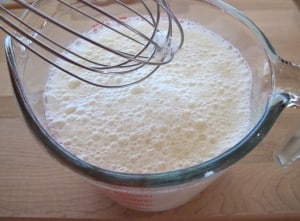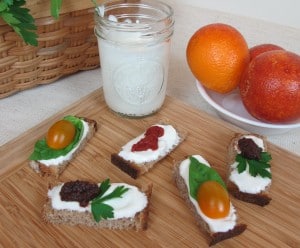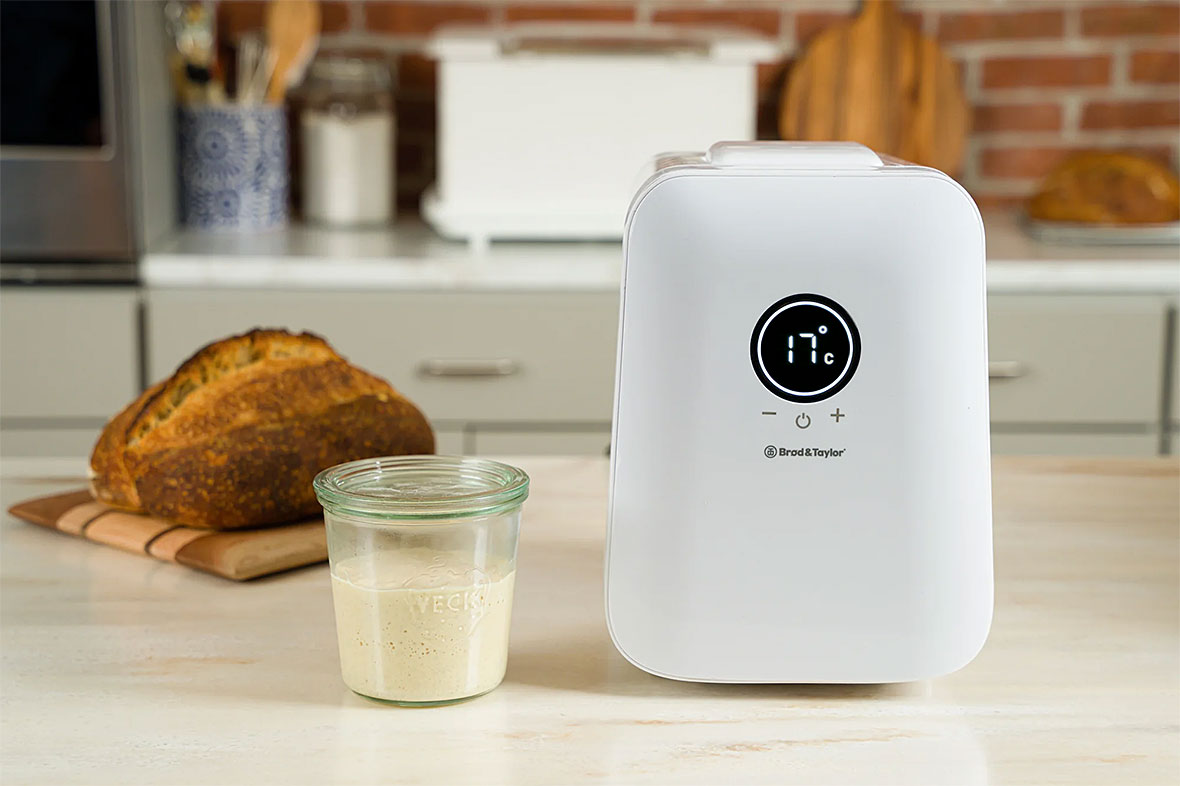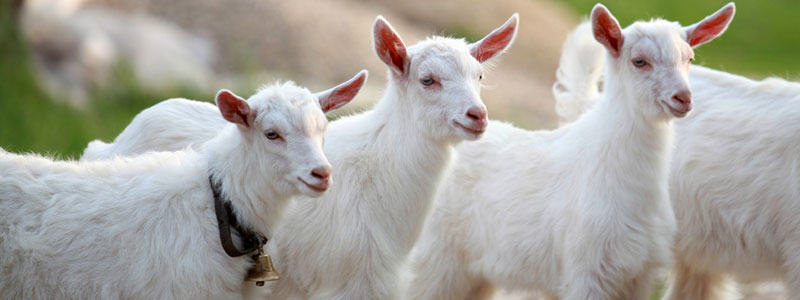Yogurt & Dairy Recipes
Goat Milk Yogurt Recipe
 We tested several different methods for making goat milk yogurt, and the flavor of this classic method was unanimously preferred by our tasters.
We tested several different methods for making goat milk yogurt, and the flavor of this classic method was unanimously preferred by our tasters.
Keeping the milk below 165F / 74C makes a very mild and fresh-tasting goat milk yogurt. This yogurt is thin in texture, remaining pourable. For a thicker texture, consider adding 4 tsp corn starch or ¼ tsp powdered agar agar for every cup of goat milk. The starch or agar will need to be dissolved in a little water or milk and boiled to dissolve and activate the thickeners, then added to the hot goat milk. It is possible to make a thicker goat milk yogurt with our custard-style method, but the flavour produced was not favoured by our taste testers.
Goat milk yogurt can be strained through a coffee filter to produce a thick, spreadable cream cheese consistency that makes a delicious savoury spread similar to fresh goat cheese.
| Ingredients | Quantity | ||
| Goat Milk | 1 Litre | 2 Litre | 4 Litre |
| Yogurt* | 30 g | 60 g | 120 g |
*Either store-bought goat yogurt, plain dairy yogurt with live cultures or homemade yogurt reserved from a previous batch. Learn more about how to maintain a yogurt culture.
Equipment: Brød & Taylor Proofer, thermometer, glass mason jars or other heat-proof containers with a capacity of one quart / one litre or less. Everything that will touch the milk should be thoroughly clean and dry.
Note: When using the Folding Proofer to make yogurt, be certain there is no water in the water tray. The water tray is not needed for making yogurt. You can remove it from the Proofer, if you like, or leave it empty. But do not add water because it will affect temperature settings.
 Step One: Heat Milk to 74 ºC. Using either a microwave or the stovetop, heat milk to 74 ºC. If using the stovetop, stir frequently to prevent scorching. If using an optional thickener, stir it into a little cold milk or water and boil, then add it to the hot goat milk. Tip: Whisking the milk to cover the surface with bubbles will prevent the milk from forming a skin during heating and cooling.
Step One: Heat Milk to 74 ºC. Using either a microwave or the stovetop, heat milk to 74 ºC. If using the stovetop, stir frequently to prevent scorching. If using an optional thickener, stir it into a little cold milk or water and boil, then add it to the hot goat milk. Tip: Whisking the milk to cover the surface with bubbles will prevent the milk from forming a skin during heating and cooling.
Step Two: Cool Milk to 46 ºC. Remove the goat milk from the heat and allow to cool to at least 46 ºC. For faster cooling, place the container of milk in a pan or sink of cold tap water. While the milk is cooling, set up the Proofer with the wire rack in place and the temperature at 49 ºC.
Step Three: Add Yogurt. Put the yogurt with live cultures into a small bowl. Gradually stir in enough of the warm goat milk to liquefy the mixture and mix until smooth. Then pour the liquefied culture back into the large container of milk and stir gently to distribute. Pour the milk into jars and place in the Proofer. Tip: For proper heat circulation and the most accurate culturing temperature, arrange the jars so that they are not directly over the center of the Proofer.
 Step Four: Culture at 49 ºC for an Hour, then Lower the Heat to 30 ºC. Set a kitchen timer for one hour, then after that hour turn the Proofer down to 30 ºC. It’s important not to let the yogurt remain at 49 ºC for more than an hour in order to avoid the whey separation and lumpy texture that come from culturing too hot.
Step Four: Culture at 49 ºC for an Hour, then Lower the Heat to 30 ºC. Set a kitchen timer for one hour, then after that hour turn the Proofer down to 30 ºC. It’s important not to let the yogurt remain at 49 ºC for more than an hour in order to avoid the whey separation and lumpy texture that come from culturing too hot.
Step Five: Check the Yogurt after Three Hours. Check the goat milk yogurt by spooning a little out and checking for a thicker texture and pleasantly tart taste. When the yogurt is ready, put it into the refrigerator and allow it to chill thoroughly. Be sure to reserve enough yogurt to start your next batch.



 Select Country
Select Country











